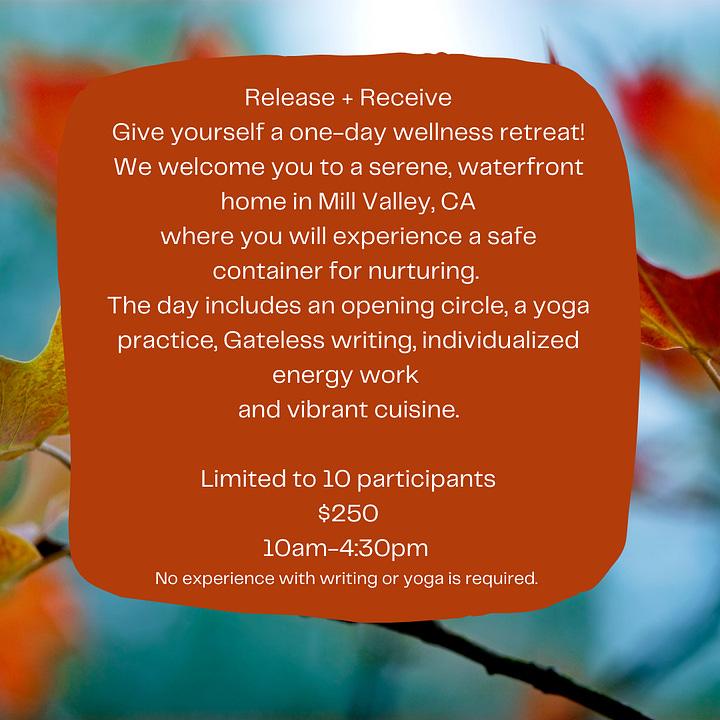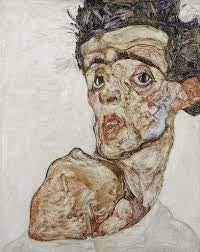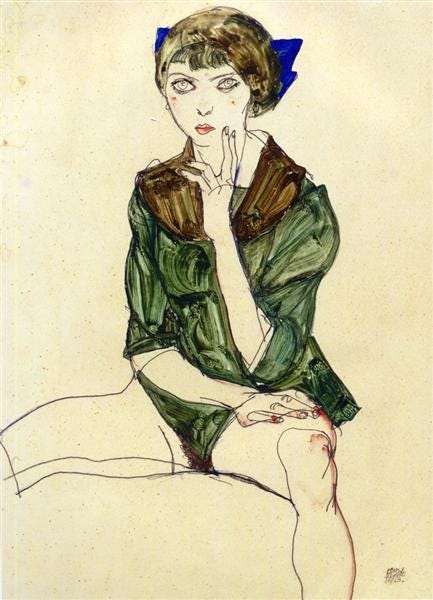Maybe it is my recent 53rd birthday, or our two cats dying within six weeks of each other, or maybe it is my new breathwork practice, but in the last few months, there seems to be an urgency to be real, vulnerable, lay my life bare. There’s no energy for artifice or bureaucracy. Life can be so incredibly hard and poignantly beautiful in the same moment.
So, turning 53 felt like a nice exhale. Michael and I had a tasty and quiet lunch at La Playa de Artistas restaurant near Montezuma. For me aging has less to do with my body changing and more to do with my focus becoming laser sharp. I don’t mean to-do lists and productivity. Now I’m tending to my inner world, consistently showing up for myself in all of boring ways. Every morning there’s walking dogs, meditation, breathing, movement, eating lots of fresh fruit and veggies, time in nature, solid sleep and practicing creativity. For the last few days, my tending has been allowing my mind to see the interconnectedness with breath, poetry, and visual art. Tending to my mind and body is a conscious and vital way to live in what seems now to be this hyperspeed called time. (How do I have a 24 year old and 10 year old?)
Breathwork fascinates me both as a facilitator and a practitioner. It contains attuning, witnessing, holding space, allowing oneself to be seen and supported while being human: breathing, crying, releasing, raging, marinating in bliss while the body becomes whole again. (Sorry, for the long lists, but it’s many things at once.) Like the teaching of writing, facilitating breathwork is a privilege, to be in a space of trust and connection with someone I may have known for decades or just met online four minutes earlier. Breathwork is more satisfying than some aspects of teaching writing. When I am lecturing on designing topic sentences, but I see in my students’ body language that they are struggling with something way more important than syntax, it feels ridiculous to not be able to hold space for them in a way that is effective. With breathwork, we get down to what is essential. And, while some clients might want or need to tell their story behind what they are feeling, really, the story is secondary to the visceral, the soma, the messages the body is communicating.
More on Jouissance
Jouissance is a french term that doesn’t translate well into English. It’s etymological roots hail from the late 15 century., "possession and use" (of something), from Old French joissance, from joissant "happy, glad," present participle of joir "to enjoy, take delight in, take pleasure in.” More recently, philosopher Cixous defines jouissance as the source of feminine creative power that combines the erotic, mystical and political. Literary critic Barthes uses the term jouissance to capture the writer friendly text that doesn’t let the reader passively find pleasure, but instead explodes the fixed ideas of the reader, so they both get to let their old ideas die as they take on new perspectives. In psychology, Lacan uses jouissance to describe a type of tension in pleasure that is on the edge of pain or vice versa. It holds a near death quality of seeing and being seen.
Since breath is essential to each of us, when we do it intentionally and begin to quiet the mind, the resistance is often pronounced. We squirm, unconsciously hold our breath, or get in our own way by giving energy to our thoughts. Yet, when we unclench the mind, breathe past or through that resistance, there is a jouissance that washes over the body that is choosing with each breath to stay with the living, tend to one’s own inner world and let go into one’s heart, however lost.
I love the collaboration of breathwork. I purposely chose Pause because they teach a trauma informed approach, value moving slow (titrating). Safety and agency is of utmost importance for a breather to unclench their minds and drop into their bodies.
Jouissance in Poetry
Breathwork, of course, is not the only path, as jouissance does weave into other forms of art. I’ve felt this through poetry and painting. A few poets whose work offers this experience for me include Jack Gilbert, Emily Dickinson, and some of Rainer Maria Rilke. Dickinson’s and Rilke’s narrators can see themselves and witness their own edges of pleasure alongside death, capturing a specific confrontational type of exhilaration. Here’s an excerpt from Dickinson’s “It might be lonelier.”
I am not used to Hope--
It might intrude upon--
It's sweet parade--blaspheme the place--
Ordained to Suffering--
It might be easier
To fail--with Land in Sight--
Than gain--My Blue Peninsula--
To perish--of Delight--
Rilke’s Duino Elegies are woven with jouissance, as in the ninth elegy when he is questioning why we exist, why we human (verbing a noun here, I know)—past, present, and future, even with all of its heaviness, its breaking of boundaries.
Isn’t the secret intent
of this taciturn earth, when it forces lovers together,
that inside their boundless emotion all things may shudder with joy?
Threshold: what it means for two lovers
to be wearing down, imperceptibly, the ancient threshold of their door–
they too, after the many who came before them
and before those to come. . . . ., lightly.
Try reading Dickinson’s and Rilke’s lines aloud, your breathing likely feels contracted. The breath of their lines brings forward their resistance, yet the words are reaching for or touching on that joy.
Painting During the Spanish Flu
Egon Schiele’s self portraits and portraits of women also hold jouissance. His paintings capture both the angst and the joy of living in a body—an awareness and confrontation with death that is mesmerizing and continues to feel like an authentic rendering of the experience of life. Of course, the fact he died at age 28 from the Spanish flu, just two days after his pregnant wife and child, adds to the viewers’ confrontation. In this self-portrait with raised, bare shoulder below, there’s an expression of both astonishment and distressed outcry, and there’s clearly a disassociation with the distorted image of the body.
Furthermore, in the painting of a the seated woman in a green blouse, he mixes the sensual with the confrontational. In Schiele’s work, the human form is raw, off-putting, and full of fascinating contradictions. I love the way he shifts ideas of accepted forms of beauty, and twists the human form just enough to make the viewer uncomfortable (I chose some of his most tame paintings, btw.)
As I breathe regularly to process my own losses, frustrations, or reactions and facilitate others in their breathing experiences, I realize conscious breathing can bring a very intentional, clear-eyed pleasure to anyone who practices it.
Free Breathwork Practicum Hours Are Open
I still have spots for breathwork sessions through the end of October. I’ve completed 25 hours and have 15 more to go for my practicum, so I’d love to work with more of you or see you for repeat sessions. I will be traveling October 3-18th so those days are blocked off. Clients who experience multiple sessions say that they are able to get more out of the breathwork as they practice. Sign up if you are interested in experiencing breathwork or just want to learn more. 💜
Release + Receive: Women’s Wellness Retreat—Sold Out!!
We have been floored by the response to our October day-long retreat in Mill Valley. Ten fabulous women have signed up, and we are so thrilled to host them in just a few short weeks.




During my family’s California visit, (October 4-17) we have a lovely stretch of days planned to spend time with CA family and friends, host the retreat, take care of check-ups, and to celebrate Harrison’s 24th birthday, making our first family trip to Disneyland.
Sabbatical Time
This fall quarter, I’m on sabbatical, my first official one in 29 years of teaching. Woo-hoo! While I have a sabbatical project to work on, taking a break from teaching is a treat to my nervous system. As I post that out-of-office email, I’ll be spending time with Harrison, Lazlo, and Michael, all my fur babies, finishing my breathwork facilitator training with Pause, and treating myself to a retreat in Costa Rica hosted by my mentor and friend Meg Sylvester.
Somatic Mentorship
While I’m not offering any new courses until 2024, I am open for two clients who may desire a 3-month mentorship (October-December) This will include seven, 90 minute online session mentorship that focus on healing from the bottom up. You will also have support via text or phone as things arise. This mentorship is perfect if you are:
Navigating a child’s diagnosis or complex circumstances
Struggling with burnout at work, in relationships, or creatively
Experiencing a recent major life change like a break up or an illness
Hitting writers’ block or procrastinating with a current project
Circling in negative thought patterns or self-sabotaging actions.
We will collaborate to set intentions, and use somatic strategies that are geared to your specific needs to meet those intentions effectively and efficiently. Payment plans are available. If you are interested, please email me at kimberlycescamilla@gmail.com or send me a dm on social media (FB, IG, Linkedin)







